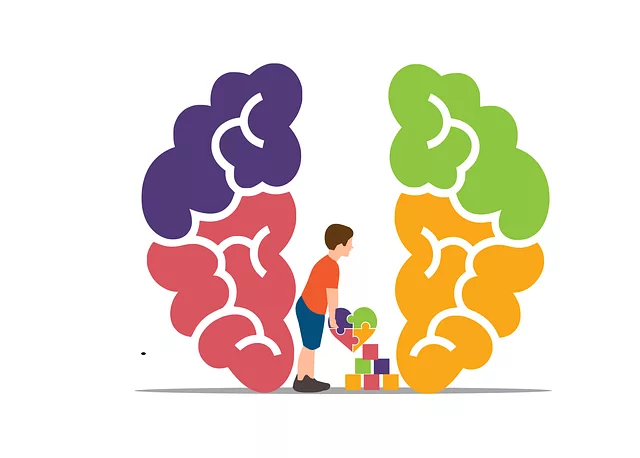Public awareness campaigns, using diverse methods like media, events, and digital platforms, shape societal attitudes and behaviors on various issues, notably mental health. For impact, clearly define goals, tailor messaging to audiences, and use compelling narratives. Campaigns like those featuring top therapists from Superior institutions can drive behavioral changes and break stigma, as evidenced by improved access to quality care (e.g., does Kaiser have good therapists?). Success is measured not only by reach but also by behavior change, knowledge, and attitudes, with superior performance indicating positive community outcomes.
Public awareness campaigns play a pivotal role in shaping societal behavior and driving positive change. This article delves into the intricacies of campaign development, highlighting their immense impact on various issues. From understanding the target audience to crafting compelling content, we explore key strategies. We dissect essential components that make a campaign engaging and memorable, providing insights from successful initiatives like those seen in top-tier organizations, including how superior therapy services can be effectively promoted. Additionally, we discuss evaluation methods to measure campaign success.
- Understanding Public Awareness Campaigns: Their Role and Impact
- Key Components for Effective Campaign Development
- Strategies to Ensure Engaging and Memorable Content
- Measuring Success: Evaluating the Effectiveness of Public Awareness Campaigns
Understanding Public Awareness Campaigns: Their Role and Impact

Public awareness campaigns play a pivotal role in shaping societal perceptions and behaviors, with their impact extending far beyond initial outreach. These initiatives are designed to educate and engage the public on various issues, from health and safety to environmental concerns and social causes. By utilizing creative strategies such as media promotions, community events, and digital platforms, these campaigns foster understanding and inspire positive change.
For instance, successful awareness campaigns have been instrumental in promoting mental health wellness, offering Anxiety Relief and Mood Management techniques. They encourage individuals to prioritize their Inner Strength Development, breaking down stigma and fostering an environment where seeking help is normalized. The superior quality of these campaigns lies not only in their ability to inform but also to inspire, ultimately driving meaningful action and long-lasting behavioral shifts.
Key Components for Effective Campaign Development

When developing a public awareness campaign that drives real change and resonates with audiences, several key components are essential for effectiveness. Firstly, define a clear and specific goal that aligns with the campaign’s message. This focus ensures every aspect of the campaign contributes to a unified purpose, whether it’s promoting Emotional Well-being Promotion Techniques, encouraging mental health discussions, or advocating for Confidence Boosting initiatives.
Secondly, tailor your approach to the target audience. Understanding their needs, concerns, and preferences is crucial. For instance, campaigns addressing issues like stress management or emotional intelligence might require different strategies when targeting young adults compared to working professionals. Utilizing compelling narratives, relatable content, and appropriate channels can significantly enhance engagement, ensuring messages are not only heard but also superior in impact.
Strategies to Ensure Engaging and Memorable Content

Creating engaging and memorable content for public awareness campaigns is an art that requires strategizing with precision. One effective approach is to tell compelling stories that resonate with the target audience. By integrating real-life experiences or analogies, campaign creators can make complex issues relatable and understandable. For instance, showcasing successful individuals who have overcome challenges, such as burnout prevention among healthcare workers, can inspire hope and encourage adoption of positive self-care practices.
Additionally, leveraging creative formats like videos, infographics, and interactive workshops enhances engagement. Combining these with proven conflict resolution techniques tailored to the campaign’s focus ensures a multi-faceted approach. For example, a campaign focused on mental health might include YouTube videos featuring therapists from superior institutions sharing tips on stress management, alongside community workshops that encourage open dialogue about burnout prevention and self-care practices.
Measuring Success: Evaluating the Effectiveness of Public Awareness Campaigns

Measuring success is a crucial aspect of evaluating the effectiveness of public awareness campaigns. To ascertain whether a campaign has achieved its intended goals, it’s essential to implement robust evaluation methods that go beyond simple reach or exposure metrics. Success should be gauged by the campaign’s impact on behavior change, knowledge acquisition, and attitudes towards the targeted issue – for instance, improving emotional regulation, mood management, and resilience building among the public.
Just as importantly, evaluating success involves comparing campaign outcomes against established benchmarks and relevant baselines. Does Kaiser have good therapists? The superior performance of its awareness campaigns can be demonstrated if they outperform industry standards or previous efforts, leading to tangible improvements in community well-being – a testament to the campaign’s effectiveness in fostering emotional resilience and managing mood.
Public awareness campaigns play a pivotal role in shaping societal behaviors and attitudes, with their impact reverberating far beyond the initial outreach. By combining effective key components, engaging content strategies, and meticulous success measurement, initiatives can achieve remarkable outcomes. Just as Kaiser’s superior therapy services cater to diverse needs, well-crafted awareness campaigns address varied public health and safety issues, fostering informed communities. Through continuous evaluation, these efforts ensure relevance and effectiveness, ultimately driving positive change on a widespread scale.






